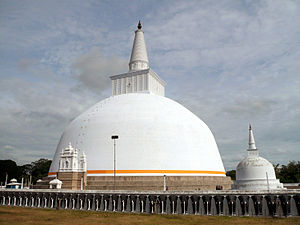|
Dharma companions is a blog focusing on Dharma activities, information dissemination and bringing awareness to the multifaceted aspects of Buddhism for the community from Shah Alam Buddhist Society (SABS). Postings should be of interest to Buddhist and anyone who seeks information on Buddhism. As the title suggest, we also aim to be a companion to those who seeks our company in this path that we undertake. May you be well, happy and peaceful.
Saturday, October 22, 2016
“Be a 21st century Buddhist,” says the Dalai Lama in Zurich
Bhumibol Adulyadej and Buddhist Kingship in Thailand
Rama IX served as a revered symbol and also shielded his country from the worst consequences of its political instability.
By Akhilesh Pillalamarri October 15, 2016 The Diplomat
What makes an ideal king in the Buddhist tradition?
This is a question that many will ponder, as Thailand mourns the death of the late Rama IX (Bhumibol Adulyadej) and awaits the ascension of his controversial heir, Maha Vajiralongkorn. Buddhist monarchs continue to reign in Thailand, Cambodia, and Bhutan (and Buddhism has influenced the more Shinto-oriented imperial tradition of the Japanese monarchy). Moreover, the metaphysics of Buddhism remain intertwined with office of the Dalai Lama.
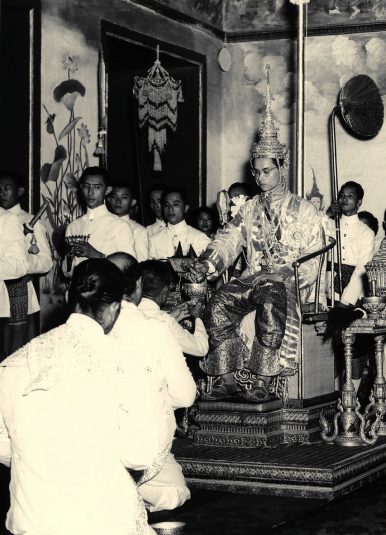
Image Credit: Public Domain image via Wikimedia Commons
Peace is everywhere
Peace is within oneself to be found in the same place as agitation and suffering. It is not found in a forest or on a hilltop, nor is it given by a teacher. Where you experience suffering, you can also find freedom from suffering. Trying to run away from suffering is actually to run toward it.
~ Ajahn Chah
~ Ajahn Chah
Labels:
Teacher,
Understanding
Location:
Shah Alam, Selangor, Malaysia
Pakistan and Lanka tread the path of Buddhist heritage
by Frances Bulathsinghala, Dawn, Oct 7, 2016Lahore, Pakistan -- Pakistan and Sri Lanka have embarked on a new journey in bilateral relations by benefiting from a common Buddhist heritage. 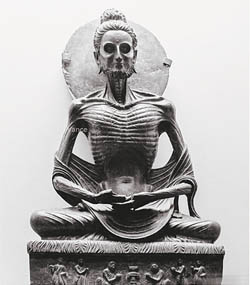 The Fasting Buddha at the Lahore Museum is said to date back to the Gandhara period and is one of the many Buddha relics and sites in the country which the Lankan delegation visited. The Fasting Buddha at the Lahore Museum is said to date back to the Gandhara period and is one of the many Buddha relics and sites in the country which the Lankan delegation visited.Till the end of Lanka’s war with the Tamil Tiger rebels in mid-2009, the relationship was based on military support to the Lankan government. However, a gradual cultural orientation was in the offing in Pakistan’s diplomatic policy with Sri Lanka. In 2007, the book Buddhist Gandhara - History, Art and Architecture, written by a Pakistani musicologist and archaeologist, Mr Ihsan H Nadiem, was translated into Sinhala. |
Location:
Lahore, Pakistan
Friday, October 21, 2016
Keeping the Breath in Mind by Ajaan Lee Dhammadharo
Method 2
THERE ARE SEVEN BASIC STEPS:
1.Start out with three or seven long in-and-out breaths, thinking bud- with the in-breath, and dho with the out. Keep the meditation syllable as long as the breath.
2.Be clearly aware of each in-and-out breath.
3.Observe the breath as it goes in and out, noticing whether it’s comfortable or uncomfortable, broad or narrow, obstructed or free-flowing, fast or slow, short or long, warm or cool. If the breath doesn’t feel comfortable, adjust it until it does. For instance, if breathing in long and out long is uncomfortable, try breathing in short and out short.
1.Start out with three or seven long in-and-out breaths, thinking bud- with the in-breath, and dho with the out. Keep the meditation syllable as long as the breath.
2.Be clearly aware of each in-and-out breath.
3.Observe the breath as it goes in and out, noticing whether it’s comfortable or uncomfortable, broad or narrow, obstructed or free-flowing, fast or slow, short or long, warm or cool. If the breath doesn’t feel comfortable, adjust it until it does. For instance, if breathing in long and out long is uncomfortable, try breathing in short and out short.
Labels:
Meditation,
Teacher
Location:
Shah Alam, Selangor, Malaysia
What happens at every moment?
Labels:
Understanding
Location:
Shah Alam, Selangor, Malaysia
Nepal’s most popular Buddhist nun is a musical rock star
The Hindu, October 14, 2016Ani Choying Drolma is famous as one of the Himalayancountry’s biggest pop icons.Kathmandu, Nepal. In this October 7, 2016 photo, Buddhist nun and musician Ani Choying Drolma performs during a concert in Mumbai. She is one Buddhist nun everyone in Nepal knows by name, not because she is a religious icon and a UNICEF goodwill ambassador, nor for her work running a girl’s school and a hospital for kidney patients but because she is one of the country’s biggest pop stars. With more than 12 albums of melodious Nepali tunes and Tibetan hymns that highlight themes of peace and harmony, the songstress in saffron robes has won hearts across the Himalayan nation and abroad.  Nepali tunes, Tibetan hymns With more than 12 albums of melodious Nepali tunes and Tibetan hymns that highlight themes of peace and harmony, the songstress in saffron robes has won hearts across the Himalayan nation and abroad. “I am totally against the conservative, conventional idea of a Buddhist nun,” the 45-year-old nun said. Some people “think a Buddhist nun should be someone who does not come out in the media so much, who is isolated ... always in a monastery, always shy. But I don’t believe in that.” Neither do her fans, who greet her with a roar of applause whenever she walks out on stage, and fall silent as she closes her eyes to sing. |
Labels:
Inspirational,
Skillful Practice
Location:
Kathmandu 44600, Nepal
Dhammapada 360
Labels:
Dhammapada
Location:
Shah Alam, Selangor, Malaysia
Malaysian Buddhists to sponsor 1,900 student monks in Sri Lanka
The Buddhist Channel, Oct 18, 2016
Kuala Lumpur, Malaysia – Maha Karuna Buddhist Society will be organizing the annual “Student Monks Education Dana” this year on 20th November, 2016. The event will be held at the village of Kirinda, in the district of Mathara, Sri Lanka. The venue was selected as it coincides with the 10th anniversary memorial of the late Ven. Dr K Sri Dhammananda, who hails from Kirinda.

Organiser of the event, Ven. Sri Saranankara Nayaka Maha Thera, Adhikarana Sangha Nayaka (Chief Judiciary) of Malaysia said that the annual event provide academic assistance in the form of books and educational materials to junior monks. This year, about 1,900 monks from the Mathara area are expected to receive the assistance.
“Every year, Maha Karuna (Buddhist Society) organizes the “Student Monks Education Dana” to provide assistance to student monks in Sri Lanka,” says Ven. Saranankara, who is also the Chief Abbot of Sri Jayanti Buddhist Temple in Kuala Lumpur. “This year, we chose the village of Kirinda to honour the 10th anniversary memorial of our late Chief Venerable Dr. K. Sri Dhammananda, who incidentally hails from Kirinda,” he adds.
Thursday, October 20, 2016
10 Misconceptions about Buddhism (#6)
This article is the sixth in the Tricycle blog series 10 Misconceptions about Buddhism with scholars Robert E. Buswell Jr. and Donald S. Lopez Jr.
Was Buddha God or Human?
While Buddhism has a place for gods, the Buddha wasn’t exactly one of them. JUN 05, 2014
While Buddhism has a place for gods, the Buddha wasn’t exactly one of them. JUN 05, 2014

Buddhism is famous in the West as an “atheistic religion,” in the sense that, unlike the Abrahamic religions of Judaism, Christianity, and Islam, it does not recognize a single creator deity. However, one should not assume from this that Buddhism has no gods. It has not one, but many.
Location:
United States
Ancient Buddhist celebration Kathina to take place in former church

(left to right) Para Ar Garn Anocha, Para Ar Garn Parnchanok and Para Ar Garn Thada in the Meditation room. Picture by FRANK REID
LISA NIGHTINGALE 18 October 2016
An ancient celebration at a Buddhist temple in South Tyneside aims to give people the chance to find out more about the religion.
Members of the Buddhist meditation centre – at the former St Andrew’s Church, off Ellison Street, Hebburn – are preparing to stage one of the most important celebrations on the calendar.
Labels:
Inspirational,
Location
Location:
South Tyneside, UK
Bhumibol mourned in Swiss Buddhist temples
Swissinfo.ch, Oct 16, 2016Lausanne, Switzerland -- Two Buddhist temples in Switzerland conducted special religious ceremonies to mourn the death of Thailand’s King Bhumibol Adulyadej. 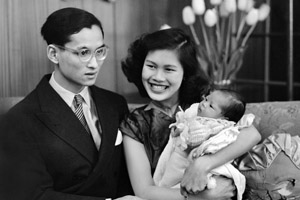 Bhumibol in Switzerland. Snapshots of Bhumibol Adulyadej's Swiss stay as well as his official visit as King of Thailand in 1960. (Images: Keystone) Bhumibol in Switzerland. Snapshots of Bhumibol Adulyadej's Swiss stay as well as his official visit as King of Thailand in 1960. (Images: Keystone) Around 250 people attended the special ceremony held at the Buddhist temple in Echallens in the canton of Vaud on Sunday to pay their respects to the former ruler of Thailand who died on October 13 at the age of 88. |
Labels:
Announcement,
Location
Location:
Lausanne, Switzerland
Dhammapada 96
Labels:
Dhammapada
Location:
Shah Alam, Selangor, Malaysia
14th-century Goryeo Buddhist painting returns home
Korea Herald, Oct 17, 2016
Kolmar Korea CEO Yoon Dong-han donates “Water-Moon Avalokiteshvara” to National Museum of Korea
Seoul, South Korea -- The rare 14th century Buddhist painting “Water-Moon Avalokiteshvara” has found its home at the National Museum of Korea.
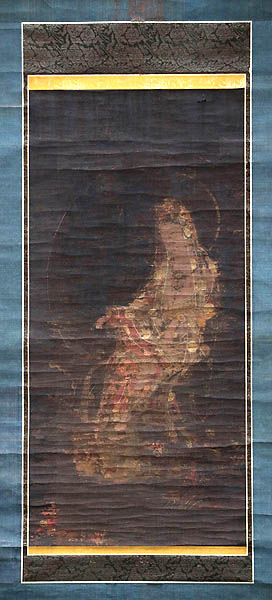
The Goryeo Buddhist painting “Water-Moon Avalokitesvara,” purchased and donated to the National Museum of Korea by Kolmar Korea Chairman Yoon Dong-han (Yonhap)
With less than 50 paintings from the Goryeo kingdom “Water-Moon Avalokiteshvara” in existence today, it was remarkable that Yoon Dong-han, the chairman of leading cosmetics and pharmaceutical manufacturing company Kolmar Korea, was able to buy the painting in Japan and bring it back home.
Alerted to the availability of the piece, Yoon bought the painting for 2.5 billion won ($2.19 million) from a Japanese art dealer in the spring.
On Monday, the National Museum of Korea was officially gifted the painting, the first-ever “Water-Moon Avalokiteshvara” for the museum. A six-month inspection preceded Monday’s ceremony, with cooperation from the Cultural Heritage Administration.
Although the museum has been endowed with works of art of higher monetary value in the past, the historical and national significance of the piece is unprecedented, Jung Myung-hee, researcher at the National Museum of Korea, explained.
Wednesday, October 19, 2016
What the Buddha Taught Us About Race
Thai forest monk Thanissaro Bhikkhu discusses four main takeaways from his new translation of the Sutta Nipata.
 The Reclining Buddha, Wat Pho, Thailand | Photo by Christopher Rose http://tricy.cl/2evDRt3
The Reclining Buddha, Wat Pho, Thailand | Photo by Christopher Rose http://tricy.cl/2evDRt3
Thai forest monk Thanissaro Bhikkhu is a prolific translator of the Pali canon, the earliest complete set of the Buddha’s teachings. Than Geoff, as he is known to his students and friends, has recently printed his translation of the Sutta Nipata (“The Discourse Group”). Made up of 72 suttas in total, the Sutta Nipata contains some of the most well-known canonical poems (you may have heard, for instance, of the Metta Sutta) and presents the Buddha’s thoughts on such topics as racism and classism. Despite the text’s antiquity, it is particularly pertinent to today’s sociopolitical climate.
Below, the monk answers four quick questions about the Sutta Nipata.
Labels:
Teacher,
Understanding
Location:
Shah Alam, Selangor, Malaysia
Buddhist Animal Rights Conference adopts Resolution calling on Govt. of Sri Lanka to enact the Animal Welfare Bill
The Buddhist Channel, Oct 18, 2016 << DVA members at Hotel Skypark, Kingstown, Dongdaemun, Seoul, South Korea (Sept. 26, 2016). Left to Right: Bob Isaacson, Ananda Mahinkanda,Venerable Thich Phuoc Tan, Senaka Weeraratna, Henry Dang (Hon. Secretary-General, Buddhist Federation of Australia), Dr. Chamith Nanayakkara, Albert Mah << DVA members at Hotel Skypark, Kingstown, Dongdaemun, Seoul, South Korea (Sept. 26, 2016). Left to Right: Bob Isaacson, Ananda Mahinkanda,Venerable Thich Phuoc Tan, Senaka Weeraratna, Henry Dang (Hon. Secretary-General, Buddhist Federation of Australia), Dr. Chamith Nanayakkara, Albert MahIt was a full day Conference. |
Labels:
Conference,
Skillful Practice
Location:
Seoul, South Korea
MN 10 (Satipatthana Sutta)
“Again, bhikkhus, a bhikkhu is one who acts in full awareness when going forward and returning; who acts in full awareness when looking ahead and looking away; who acts in full awareness when flexing and extending his limbs; who acts in full awareness when wearing his robes and carrying his outer robe and bowl; who acts in full awareness when eating, drinking, consuming food, and tasting; who acts in full awareness when defecating and urinating; who acts in full awareness when walking, standing, sitting, falling asleep, waking up, talking, and keeping silent.
“In this way he abides contemplating the body as a body internally, externally, and both internally and externally... And he abides independent, not clinging to anything in the world. That too is how a bhikkhu abides contemplating the body as a body."
Labels:
Understanding
Location:
Shah Alam, Selangor, Malaysia
How to Choose a Type of Mindfulness Meditation
A new study teases out the different benefits of four kinds of meditation. By Kira M. Newman  Okea/Adobe Stock
Okea/Adobe Stock
Many beginner meditators, myself included, start out with a mindful breathing meditation: one breath in, one breath out, the mind wanders, you bring it back.
 Okea/Adobe Stock
Okea/Adobe StockMany beginner meditators, myself included, start out with a mindful breathing meditation: one breath in, one breath out, the mind wanders, you bring it back.
Labels:
Meditation,
Opinion
Location:
Shah Alam, Selangor, Malaysia
Tuesday, October 18, 2016
10 Misconceptions about Buddhism (#5)
Buddhism: Philosophy or Religion?
In Asian religious traditions, religion—with its myths, magic, and miracles—goes hand in hand with philosophy. MAY 29, 2014
This article is the fifth in the Tricycle blog series 10 Misconceptions about Buddhism with scholars Robert E. Buswell Jr. and Donald S. Lopez Jr.

Labels:
Teacher,
Understanding
Location:
United States
Saṅkhittadesita Sutta : CONCISE TEACHING AN 8.63
translated from the Pali by Thanissaro Bhikkhu
Translator's note: This discourse is important in that it explicitly refers to the practice of the four frames of reference (the four foundations of mindfulness) as a form of concentration practice, mastered in terms of the levels of jhana.
'Then a certain monk went to the Blessed One and, on arrival, having bowed down to him, sat to one side. As he was sitting there he said to the Blessed One: "It would be good if the Blessed One would teach me the Dhamma in brief so that, having heard the Dhamma from the Blessed One, I might dwell alone in seclusion: heedful, ardent, & resolute."
Labels:
Teacher,
Understanding
Location:
Shah Alam, Selangor, Malaysia
Ruwanwelisaya Stupa
| Ruwanweli Maha Seya රුවන්වැලිසෑය | |
|---|---|
The Ruwanwelisaya is a stupa in Sri Lanka, considered a marvel for its architectural qualities and sacred to many Buddhists all over the world.[1] It was built by King Dutugemunu c. 140 B.C., who became lord of all Sri Lanka after a war in which the Chola King Elara, was defeated. It is also known as Mahathupa, Swarnamali Chaitya, Suvarnamali Mahaceti (in Pali) and Rathnamali Dagaba.
This is one of the Solosmasthana (the 16 places of veneration) and the Atamasthana (the 8 places of veneration in the ancient sacred city of Anuradhapura). The stupa is one of the world's tallest monuments, standing at 103 m (338 ft) and with a circumference of 290 m (951 ft).[2] The Kaunghmudaw Pagoda in Sagaing, Myanmar is modeled after this stupa.[3]
The stupa was an ancient ruin in the 19th century. After fundraising efforts by Sinhalese bhikkhu, the stupa was renovated in the early 20th century.[4] The Ruwanveli Seya Restoration Society was founded in 1902 and the final crowning of the stupa took place on 17 June 1940.[4]
The largest Stupa after Ruwanwelisaya was build in was the Kotmale Mahaweli Maha Seya. This stupa took 33 years and 3 months to complete.
Location:
Sri Lanka
A Challenge to Buddhists
BY BHIKKHU BODHI|

Each morning, I check out a number of Internet news reports and commentaries on websites ranging from the BBC to Truthout. Reading about current events strongly reinforces for me the acuity of the Buddha’s words: “The world is grounded upon suffering.” Almost daily I am awed by the enormity of the suffering that assails human beings on every continent, and even more by the hard truth that so much of this suffering springs not from the vicissitudes of impersonal nature but from the fires of greed, hatred, and delusion raging in the human heart.

Location:
United States
Dhammapada 251
Labels:
Dhammapada,
Teacher
Location:
Shah Alam, Selangor, Malaysia
Monday, October 17, 2016
WAS THE BUDDHA A ‘PERFECTIONIST’?
“By definition, a ‘perfectionist’ is someone who likes to accomplish something perfectly, and finds it difficult to accept anything less than flawless.
“No, the Buddha was not a ‘perfectionist’. He did not have any illusions about perfection. He truly understood the world and was very clear about imperfections in life.
“However, the Buddha taught a way to the perfection of morality, mentality, and wisdom – one which He termed the “Noble Path” (Pāli, ‘Ariyamagga’) to purification. Anyone who journeys along that Path can achieve eradication of defilements and attain perfect freedom from ‘Dukkha’.
“The Buddha took a long time to reach that perfection Himself. Thereafter, He was distinguished as ‘Vijja-carana sampanno’ – One who had perfect knowledge of the world and with faultless conduct – ‘the Perfect One’.”
– Excerpt from a Q&A Session with Nalanda founder Bro Tan.
Labels:
Teacher,
Understanding
Location:
Shah Alam, Selangor, Malaysia
Subscribe to:
Comments (Atom)
 Tibetan leader His
Tibetan leader His 












